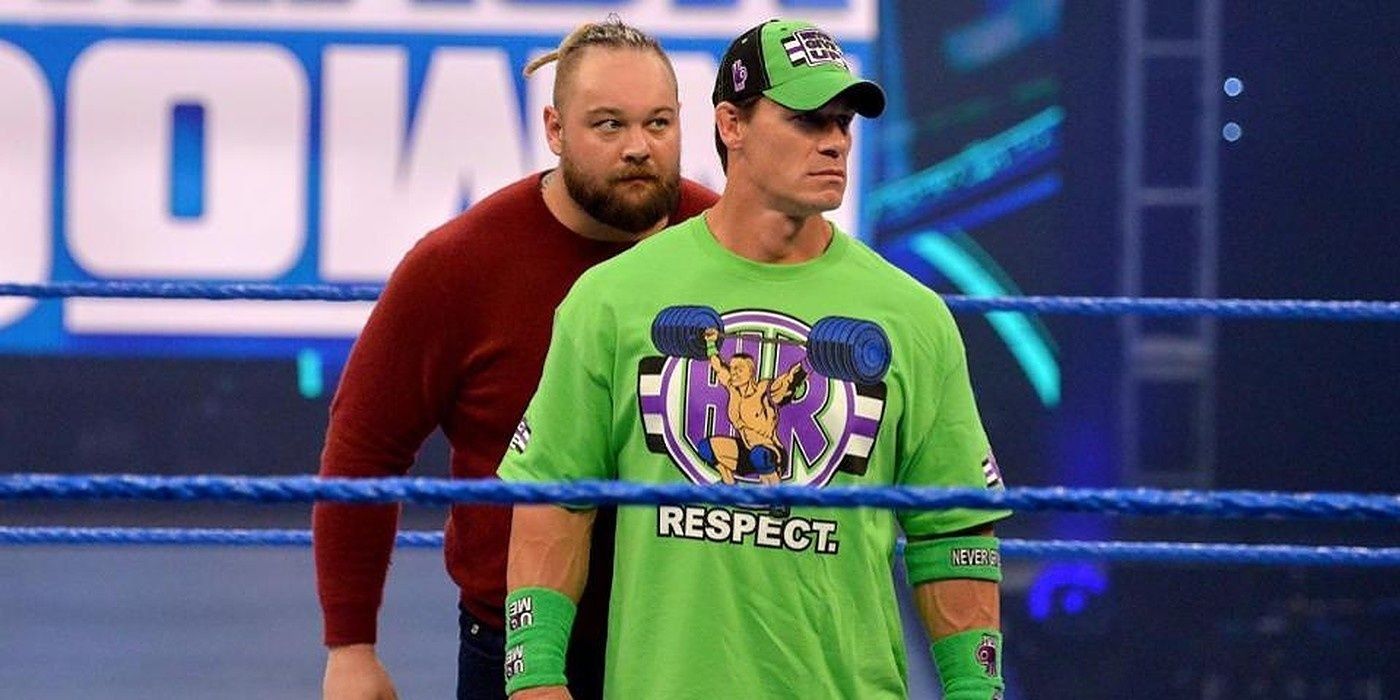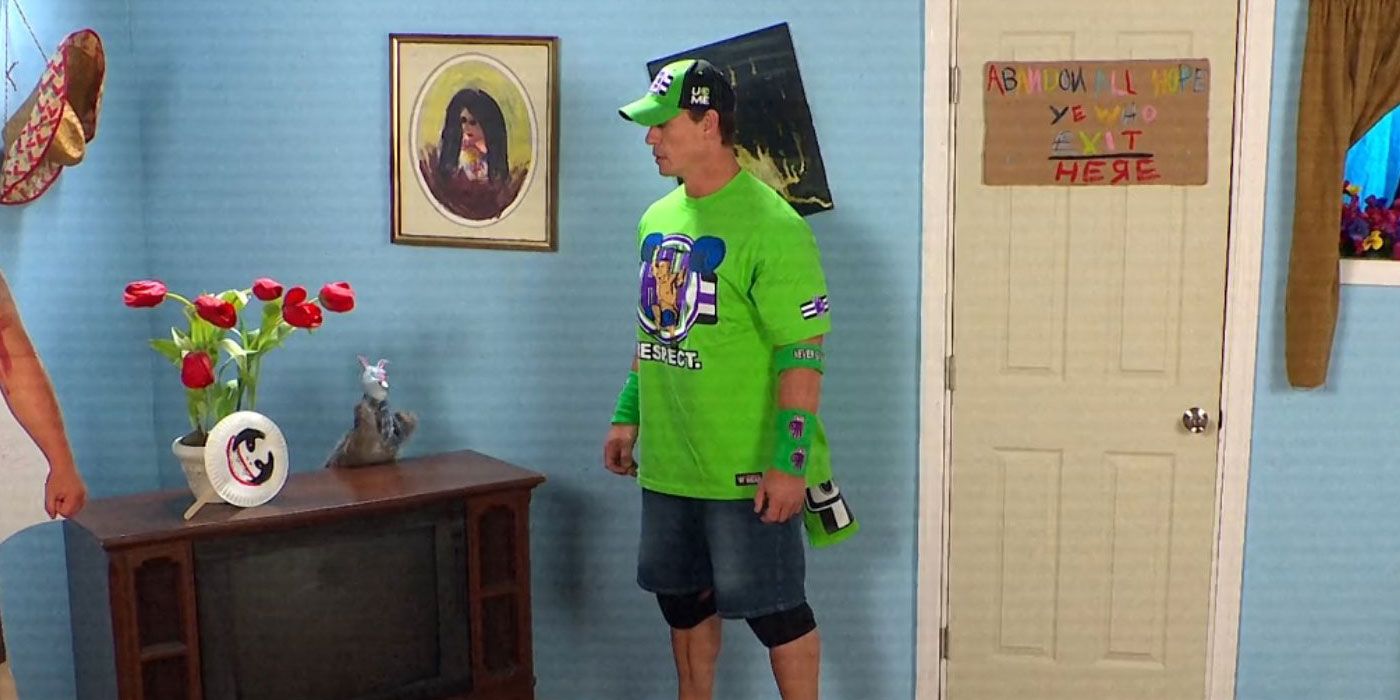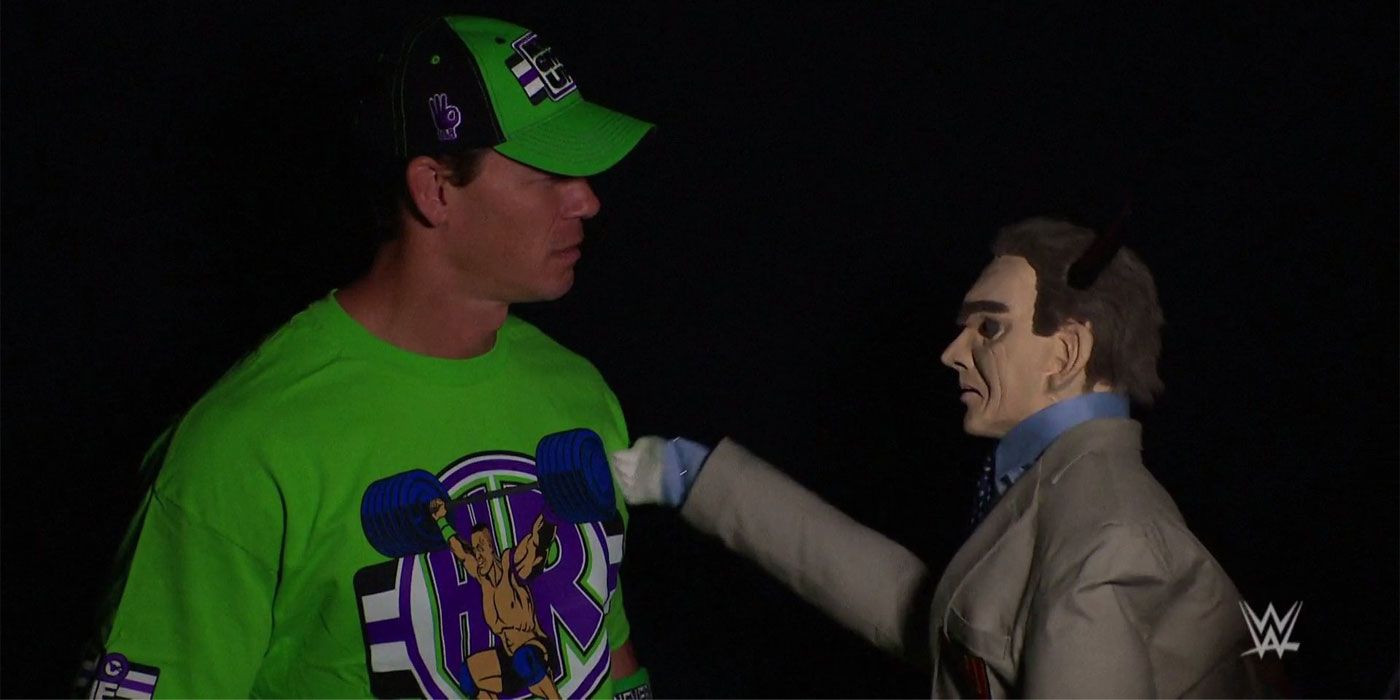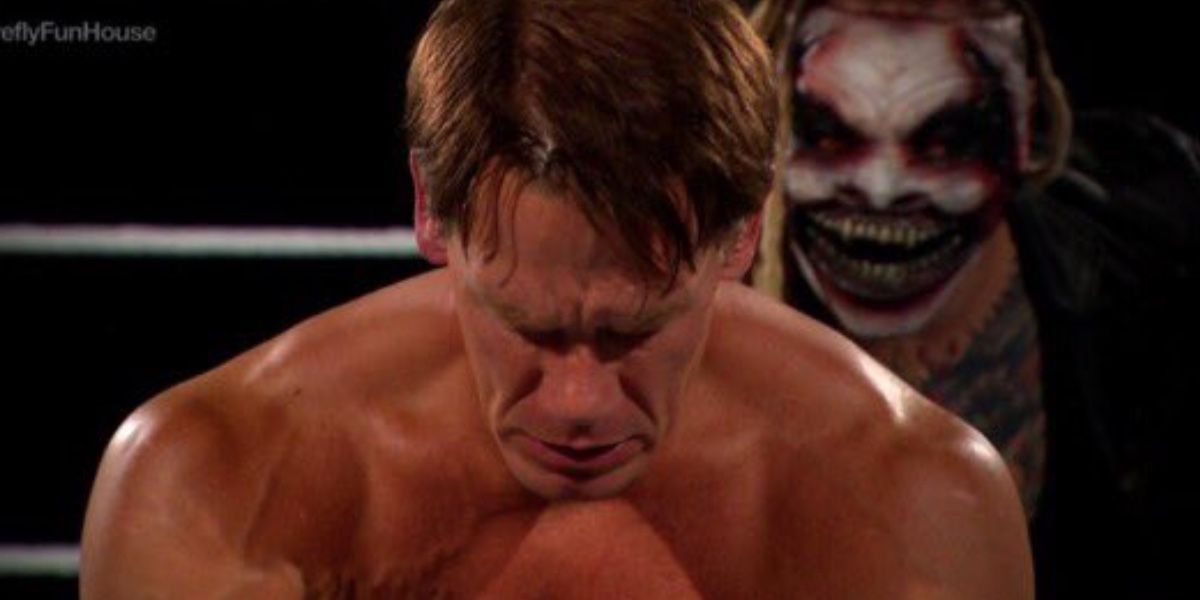Bray Wyatt's Firefly Fun House match at WrestleMania 36 just broke the mold for what can be accomplished inside the WWE. It was an instant classic that managed to spoof WWE and WCW history while revisiting some of the highlights of John Cena's career. It is a segment that is destined to be picked apart by wrestling fans for years and to go down in the history books as THE match of WrestleMania 36. But besides all of its well-earned accolades and everything else that this groundbreaking match accomplished, stands the fact that it might have just pulled off the impossible -- a double turn that ended with John Cena playing the heel.
In many ways, the double turn is wrestling's holy grail. It occurs when the face and heel squaring off in the ring exchange roles by the match's conclusion, so the wrestler who began the match being booed by the crowd ends up being cheered, and vice versa. The double turn is so beloved -- and so rare to see -- because it's incredibly difficult to pull off successfully. It's a story that has to be told entirely over the course of one match. It requires that both wrestlers be equally adept at playing both a face and a heel, and be able to transition between the two roles seamlessly. But above all else, it requires that the crowd accepts that change in the moment, and is able to both cast aside their former champion while embracing the heel whose guts they hated only a few minutes earlier.
The gold standard for double turns took place at WrestleMania 13, when Bret Hart began his match as a face against a heel Stone Cold Steve Austin, only for their roles to reverse when Austin courageously passed out rather than submit to Hart's sharpshooter, and Hart put the boots to his unconscious foe. But wrestling history is littered with the bones of attempted double turns that failed to come off in the moment. If the double turn is one of the riskiest booking moves in wrestling, it's also one of the most rewarding when done correctly -- and Bray Wyatt may have just pulled off the sneakiest double turn of all.
When Bray Wyatt challenged John Cena to a Firefly Fun House match for WrestleMania 36, no one was quite sure exactly what that meant. Other than Seth Rollins briefly appearing to try and burn down the Firefly Fun House, no other wrestler had ever stepped inside the cartoonish world that Bray Wyatt had created. It seemed likely that the segment would take place outside the usual confines of the squared circle (or this version of reality), and could involve Wyatt's puppet characters like Ramblin' Rabbit getting in on the action. But no one could have suspected that Wyatt's true intentions for the Firefly Fun House match were to force John Cena to confront his dark side.
Wyatt had already invoked his shared history with Cena in the lead-up to the match, with Wyatt blaming the dark place he went to after Cena defeated him at WrestleMania 30 for creating his "Fiend" persona. The opening of the Firefly Funhouse Match featured Wyatt challenging Cena to face his most dangerous foe of all -- himself -- before transporting Cena into vignettes from his past. While segments spoofing Cena's "Ruthless Aggression" era and old Hulk Hogan/Randy Savage style promos were mostly played for laughs, the latter half of the segment told a story reminiscent of an old John Hughes movie: an outcast striking back at the popular kid who bullied him.
In a segment poking fun at his old Doctor of Thuganomics persona, Cena insulted Wyatt's weight, a reference to real criticism Wyatt endured in a career that began in NXT being billed as "Husky Harris." Wyatt responded by calling Cena a bully who'd been given countless opportunities in WWE, while he'd had to fight and scrape as an overlooked outcast for every chance he could. He then transported Cena back to their WrestleMania 30 match, in which Wyatt had unsuccessfully attempted to bait Cena into getting disqualified by attacking him with a metal chair. Inside the Firefly Fun House, he begged Cena to correct this "mistake" by finally attacking him with a chair, which Cena attempted to do, swinging at Bray multiple times. The segment concluded with Cena "embracing the hate" in an assault on Wyatt's Huskus the Pig Boy puppet and joining the nWo, WCW's classic heel faction before The Fiend finally appeared to put him down with a mandible claw as Firefly Bray made the count.
Aside from the bits played purely for laughs, the narrative through-line for the match consistently centered on Bray's attempts to get Cena, the ultimate babyface, to finally give in to his inner heel -- and by all accounts, he succeeded. Bullying someone over their appearance? Attacking a defenseless opponent with a steel chair? Pummeling a weaker opponent after "embracing the hate?" Joining the nWo? These are all classic heel moves that would have previously been considered unthinkable for the paragon of "Hustle, Loyalty and Respect." On the other side of things, the fan-favorite Bray Wyatt re-positioned his Fiend persona as an avatar of justice, the bullied outcast finally standing up to his tormentor -- in other words, a classic babyface.
It should come as no surprise that a creative mind as perceptive as Bray Wyatt's was able to take advantage of the fan reactions to both his and Cena's characters to pull off the sneakiest double turn in wrestling history. The Fiend, while technically a villainous character, has always generated a strong babyface reaction all the way back to its debut appearance. Meanwhile, Cena, the biggest babyface of his generation, has always generated an intense backlash from a particular segment of the WWE audience. Whether they knew it or not, the WWE universe was ready to see The Fiend turn face to take on a heel John Cena -- this match just finally made it official.




